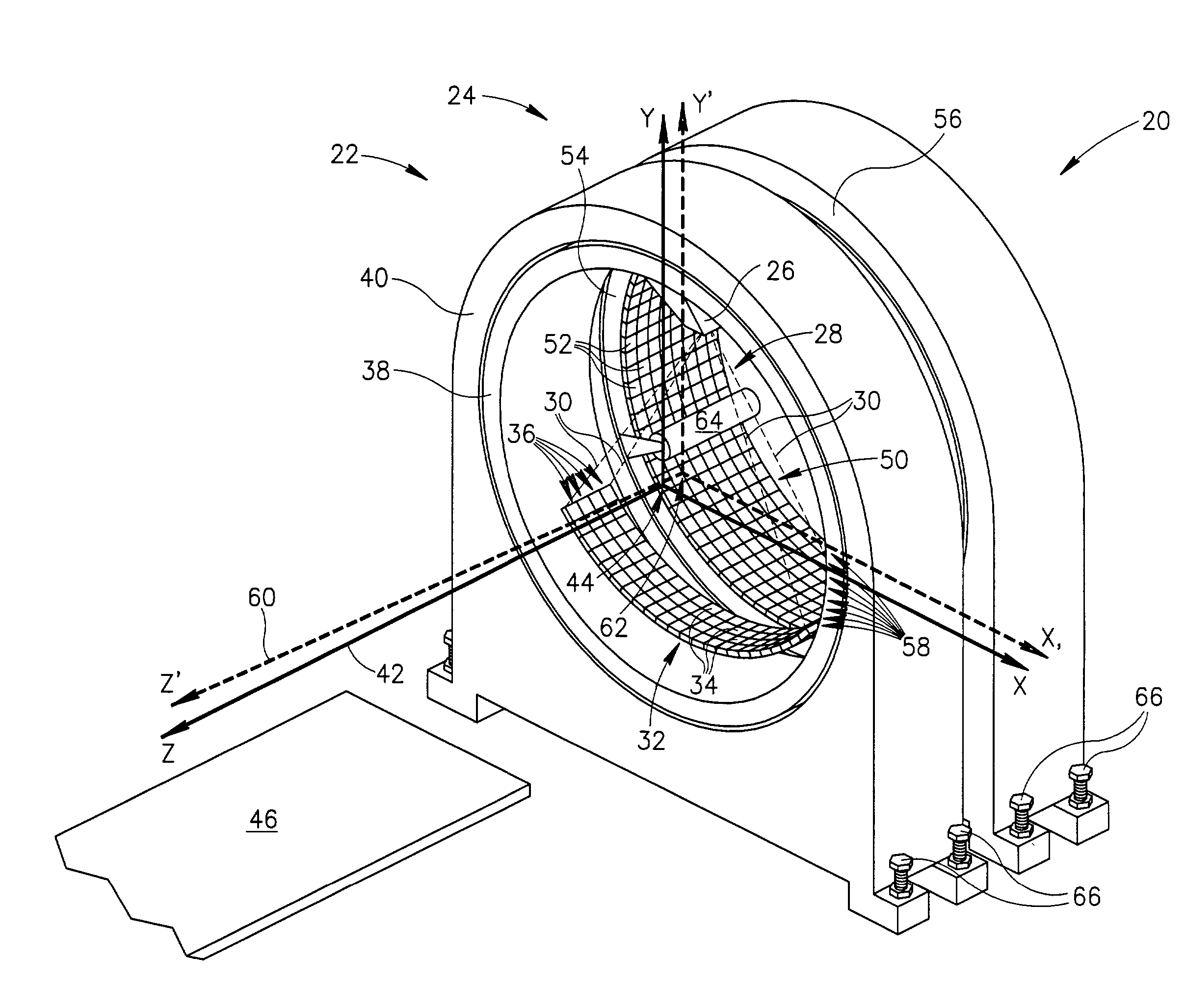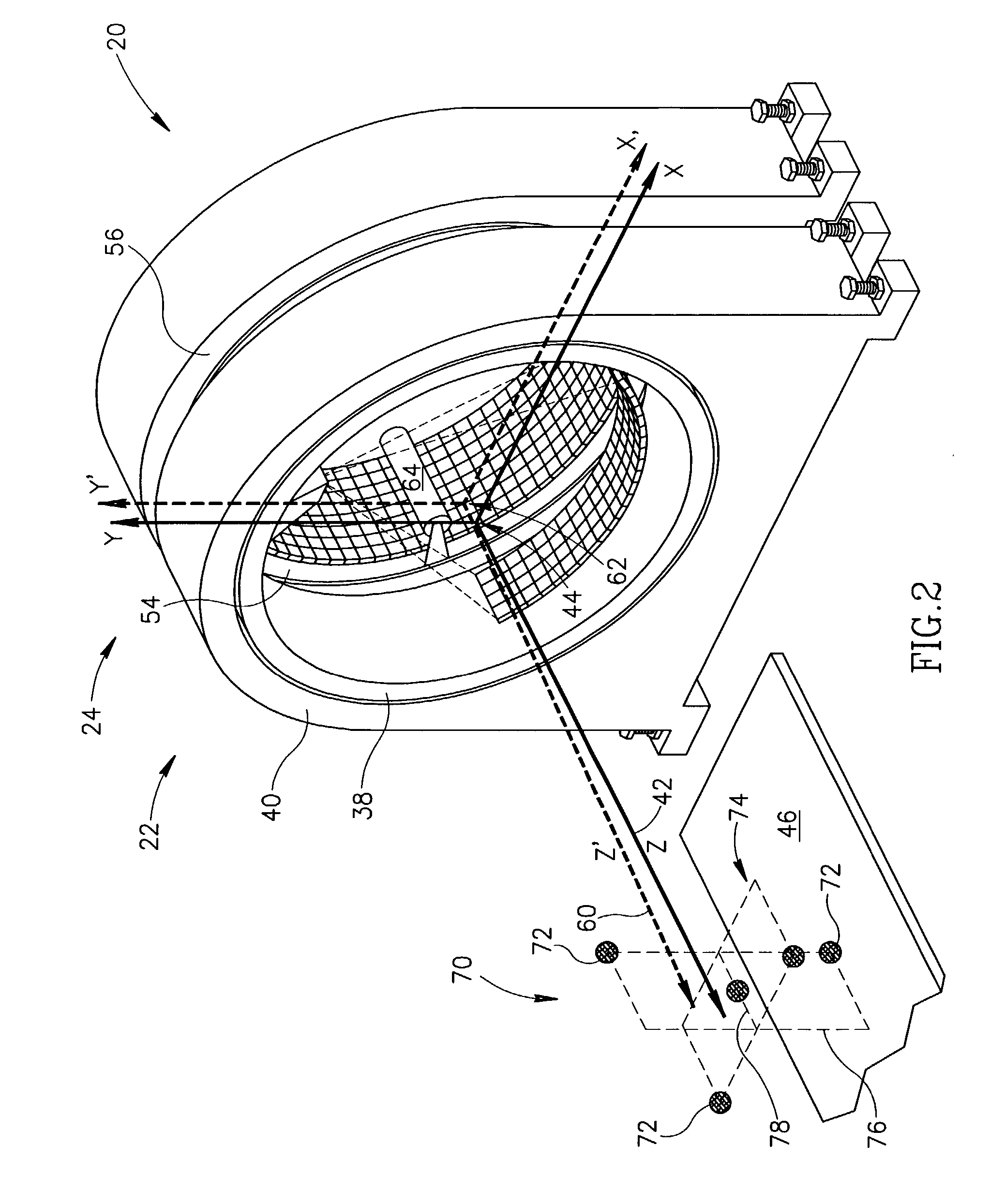Coordinate registration system for dual modality imaging systems
a dual-mode imaging and registration system technology, applied in the field of coordinate registration system for dual-mode imaging systems, can solve the problems of difficult to provide and maintain the required accuracy of coincidence of the fov coordinate system of the scanner's imaging subsystems, and in general not provide well defined images of the structural anatomy of the patient's body, so as to improve the quality of fused images
- Summary
- Abstract
- Description
- Claims
- Application Information
AI Technical Summary
Benefits of technology
Problems solved by technology
Method used
Image
Examples
Embodiment Construction
[0030] FIG. 1 schematically shows a DM scanner 20 comprising, by way of example, a CT imaging subsystem 22 and a nuclear imaging subsystem 24 which may be a PET, SPECT or PET and SPECT imaging subsystem. Hereinafter it is assumed that imaging subsystem 24 may function as both a PET and SPECT nuclear imager and is referred to as PET-SPECT imaging subsystem 24. Nuclear imaging systems that can function as both PET and SPECT imagers are known in the art. Examples of PET-SPECT imaging systems are found in U.S. Pat. No. 6,255,655 and U.S. Pat. No. 6,303,935. DM scanner 20 fuses images of a patient provided by CT subsystem 22 and PET-SPECT subsystem 24 to provide a fused image of the patient showing concentration of a radiopharmaceutical in the patient's body relative to the structural anatomy of his or her body. Only elements and features of DM scanner 20 and its subsystems 22 and 24 that are germane to the discussion are shown in FIG. 1.
[0031] CT imaging subsystem 22 comprises an X-ray ...
PUM
 Login to View More
Login to View More Abstract
Description
Claims
Application Information
 Login to View More
Login to View More - R&D
- Intellectual Property
- Life Sciences
- Materials
- Tech Scout
- Unparalleled Data Quality
- Higher Quality Content
- 60% Fewer Hallucinations
Browse by: Latest US Patents, China's latest patents, Technical Efficacy Thesaurus, Application Domain, Technology Topic, Popular Technical Reports.
© 2025 PatSnap. All rights reserved.Legal|Privacy policy|Modern Slavery Act Transparency Statement|Sitemap|About US| Contact US: help@patsnap.com



